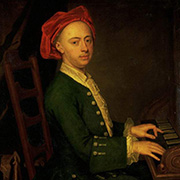As early as 1960, George Frideric Handel’s Dixit Dominus was published as part of the then comparatively new Halle Handel Edition (HHA III/1). Eberhard Wenzel edited this volume, primarily intended for practical performance use, and hoped back then in 1960 that it would “enrich the Handelian repertoire for church and concert hall by the addition of a valuable, interesting and strongly effective work”. This intention was more than fulfilled, and in the intervening years, Handel’s youthful, demanding Dixit Dominus of 1707 has become a quintessential staple of the Baroque repertoire. However, that edition did not contain a Critical Commentary, so that in cases of doubt, the basis on which editorial decisions had been made could not be reconstructed.
The new edition, edited by Hans Joachim Marx, fulfils all the requirements of a modern scholarly-critical edition. As well as a detailed foreword in two languages which answers questions about the composition of the work, its first performance, the psalms used and performance practice, the edition includes numerous facsimiles, offering an insight into the source material. Finally, the Critical Commentary provides a detailed insight into the transmission of the work and an evaluation of all relevant sources which have been consulted – probably for the first time in their entirety – for an edition of Dixit Dominus. During the course of the editorial work, incorrect variant readings adopted until now have been corrected; the basso continuo figuring has been thoroughly checked and in some cases, revised in comparison with the 1960 edition; passages with imprecise surviving text underlay have been provided with new solutions.
Tobias Gebauer
(from [t]akte 1/2013)



